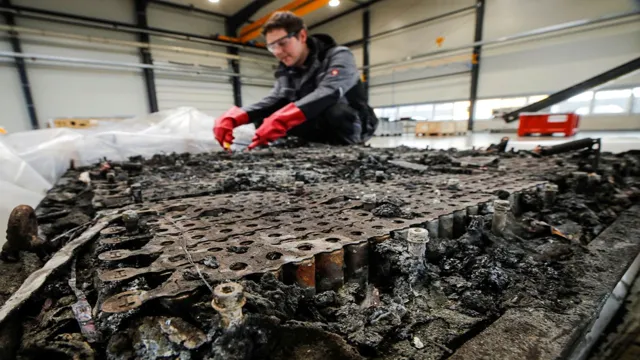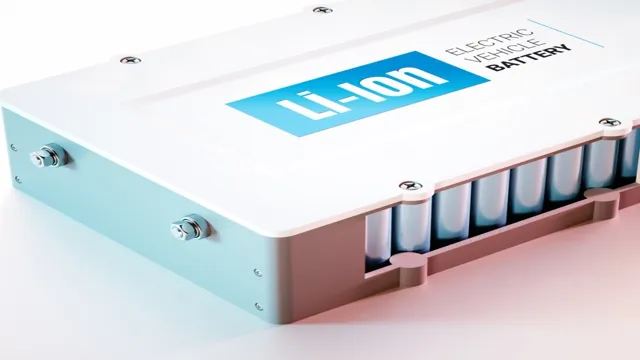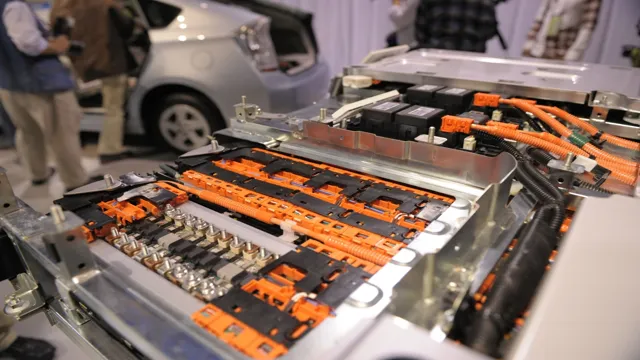Uncovering the Truth: The Environmental Impact of Electric Car Batteries
Electric cars are the future of transportation, but there are concerns about the batteries they use. Are electric car batteries toxic or not? With the rising popularity of sustainable energy, it’s important to understand the impact of the components of electric cars. In this blog post, we will explore the reality about electric car batteries regarding toxicity and the implications.
We’ll consider the lifespan of electric car batteries and whether they are environmentally sustainable. Additionally, we’ll address the materials and toxins in the process of manufacturing batteries that contribute to their eco-friendliness. Let’s dive in and discover the truth about electric car batteries.
What are Electric Car Batteries Made of?
The battery of an electric car is a complex piece of technology made up of different materials, which include metals, chemicals, and plastics. The most common battery technology used in electric cars is lithium-ion, which contains lithium, cobalt, nickel, and manganese minerals. While these materials are not inherently toxic, their extraction and manufacturing processes can lead to environmental damage and negative health impacts for those involved in the production process.
Moreover, the battery’s end-of-life disposal is a significant concern due to their potentially toxic nature, which makes recycling a crucial aspect of reducing the battery’s impact on the environment. With the increasing demand for electric cars, battery manufacturers are constantly researching and developing new technologies and materials with reduced environmental impacts and increased recyclability. Therefore, while electric car batteries contain certain materials and processes with potential environmental and health consequences, manufacturers are striving to minimize such impacts through sustainable technology and responsible recycling practices.
Lithium-ion Batteries
Lithium-ion batteries are the most commonly used type of battery for electric cars. These batteries are made up of lithium-ion cells, which have a cathode, an anode, and an electrolyte solution that allows the transfer of charged ions between the cathode and anode. The cathode is typically made of a lithium-ion compound, such as lithium cobalt oxide or lithium manganese oxide, while the anode is made of graphite.
Other materials, such as aluminum and copper, are also used in the construction of the battery. The use of these materials allows lithium-ion batteries to be lightweight and compact, making them ideal for electric vehicles. Additionally, these batteries can store a lot of energy, allowing electric cars to travel long distances on a single charge.
Overall, the use of lithium-ion batteries marks a significant shift toward the widespread adoption of electric cars, providing a more sustainable option for transportation.

Nickel-Metal Hydride Batteries
Electric car batteries are typically made up of lithium-ion, nickel-metal hydride, or lead-acid cells. Nickel-metal hydride batteries, also known as NiMH batteries, are a type of rechargeable battery that uses a chemical reaction between nickel oxyhydroxide and metallic hydride to store energy. These batteries were commonly used in hybrid electric vehicles before the switch to lithium-ion batteries.
One advantage of NiMH batteries is their ability to be recycled, as they contain less toxic materials compared to other types of batteries like lead-acid. However, they have a lower energy density and shorter lifespan compared to lithium-ion batteries. Despite the transition to lithium-ion, NiMH batteries are still used in some electric bicycles and other smaller electric vehicles.
Lead-Acid Batteries
Lead-acid batteries have been the primary choice for electric car manufacturers for years, largely due to their affordability and reliability. These batteries are made up of a plastic casing, lead plates, lead dioxide plates, and an electrolyte solution (usually sulfuric acid). When the battery is charged, the lead and lead dioxide plates interact with the electrolyte solution to create a chemical reaction that generates electricity.
The lead-acid battery is advantageous because it is relatively simple, has a low cost, and is easily recyclable. However, they also have limitations such as size, weight, and charging time. Newer battery technologies such as lithium-ion and solid-state batteries are slowly being implemented into the electric vehicle market, promising better performance and longevity.
Despite the widespread use of lead-acid batteries, the development of new battery technologies shows great promise for the future of electric vehicles.
Toxic Chemicals?
Electric cars have been praised for their eco-friendly nature and low emissions. However, some people are concerned about the toxicity of the batteries used in electric cars. The batteries used in electric cars contain a combination of metals and chemicals that can be potentially harmful to human health and the environment.
The most common chemicals found in electric car batteries are cobalt, nickel, lithium, and lead. While these chemicals can be toxic in high concentrations, the amount present in electric car batteries is relatively low and should not pose a significant risk to the environment or public health. Moreover, the automotive industry is working tirelessly to reduce the use of toxic chemicals in the production of electric car batteries.
Therefore, while electric car batteries may contain some potentially toxic chemicals, the overall impact of these batteries is much less than that of gasoline-powered vehicles.
Lithium
Lithium is often associated with negative connotations because of its classification as a toxic chemical. However, it’s important to note that not all forms of lithium are harmful. In fact, lithium is widely used in the pharmaceutical industry to treat various mental illnesses and disorders.
It has also gained popularity in recent years as a component in rechargeable batteries for electronic devices. While it is true that the mining and processing of lithium can have environmental impacts, proper regulation and sustainable practices can mitigate these issues. It’s important to recognize the benefits and potential hazards of lithium, but not to dismiss it outright as simply a toxic chemical.
Instead, we should strive for responsible and ethical practices in its production and use.
Cobalt
Cobalt has made headlines as a potential toxic chemical, but is it really bad for us? Well, it depends on how we come into contact with it. Cobalt is a naturally occurring element found in rocks, soil, and water. It is also used in various industrial processes, including the production of rechargeable batteries used in smartphones and electric cars.
Inhalation of cobalt dust and fumes can cause respiratory irritation, and long-term exposure can lead to lung disease. Ingesting high levels of cobalt can harm the heart, thyroid, and nervous system. However, the amounts of cobalt found in consumer products like jewelry are typically very low and have not been shown to pose significant health risks.
It’s always best to be cautious, but the average person doesn’t need to worry too much about cobalt toxicity.
Nickel
Nickel is a chemical element that’s used to make different kinds of materials, like stainless steel and coins, among others. While it’s widely used in many industries, some people are concerned about its potential toxicity. This metal can cause skin irritation, and people who are allergic to it can develop a rash that’s often found around jewelry or belt buckles.
However, there’s still no clear evidence that ingesting or inhaling nickel can cause long-term harm to people’s health. It’s important to note that most people are exposed to low levels of nickel on a daily basis, and only those who work in industries that use high amounts of this metal are at risk of developing nickel-related health conditions. Overall, while there’s a lot we still don’t know about nickel’s potential toxicity, it’s important for people to be aware of the possible risks and take appropriate precautions to minimize their exposure.
Recycling and Disposal
As electric cars become more popular, a common concern arises about the toxicity of their batteries. The truth is that while electric car batteries do contain some toxic materials, they are designed and manufactured with a focus on sustainability and recycling. The batteries contain metals such as cobalt, nickel, and lithium, which can be harmful to the environment and human health if not disposed of properly.
However, the electric vehicle industry has made significant progress in safely recycling these materials. In fact, many automakers have set aggressive goals to use a higher percentage of recycled materials in their batteries, further reducing the impact on the environment. Additionally, researchers are continuously working on developing new battery chemistries that do not rely on scarce or toxic materials, ensuring that electric vehicles remain an eco-friendly option for the future.
So, to answer the question, yes, electric car batteries contain some toxic materials, but the industry is taking measures to make recycling and disposal as safe and sustainable as possible.
Battery Recycling
Battery recycling is an essential aspect that many people overlook. When we dispose of batteries without recycling, they emit harmful chemicals into the environment. These chemicals can cause significant damage to our planet.
Recycling batteries can ensure that all the materials can be reused without causing any damage to the environment. Batteries that are not properly recycled and disposed of can lead to soil and water pollution, which can be harmful to wildlife and human life as well. Therefore, it’s vital to properly recycle batteries to promote a healthier environment.
By choosing to recycle batteries, we can keep the toxic materials out of landfills, reduce pollution, and conserve resources. So, don’t underestimate the impact small actions can make. Recycling batteries is an essential step towards creating a sustainable future for our planet.
Proper Disposal of Electric Car Batteries
When it comes to electric car batteries, proper disposal and recycling are crucial to minimize their impact on the environment. These batteries are made up of valuable and potentially hazardous materials that need to be recycled properly. Recycling can recover up to 99% of the materials used in the battery, such as lithium, nickel, and cobalt.
The remaining materials, such as plastics and metals, can also be recycled. By properly recycling these batteries, we can reduce the amount of waste in landfills and ensure that these valuable materials are reused. Additionally, not recycling batteries can pose environmental and health risks.
These batteries can leak hazardous chemicals into the soil and waterways. To avoid these dangers, it’s important to dispose of these batteries correctly. When it’s time to replace your electric car’s battery, contact your manufacturer or approved recycling center to ensure its proper disposal and recycling.
By taking these simple steps, we can play a part in reducing waste and protecting our planet.
Conclusion
In conclusion, while electric car batteries may contain some toxic materials, it is important to note that these are being actively addressed by manufacturers who are investing heavily in developing safer and more sustainable battery technologies. Furthermore, the environmental benefits of electric vehicles, such as significantly reduced carbon emissions and air pollution, far outweigh any potential negative impacts. So, to answer the question – are electric car batteries toxic? – perhaps we should instead ask if we can really afford not to invest in this transformative technology.
“
FAQs
Are electric car batteries toxic?
Electric car batteries contain toxic materials such as nickel, cobalt, and lithium, but are designed to be safe for everyday use and disposal.
How are electric car batteries disposed of?
Electric car batteries can be recycled and their toxic materials can be repurposed, but improper disposal may contribute to environmental damage.
Why are electric car batteries considered less harmful than gasoline cars?
Electric cars produce lower emissions than gasoline cars, reducing greenhouse gas emissions and contributing to cleaner air.
Are there any health risks associated with electric car batteries?
Electric car batteries have been tested to meet safety standards and pose no significant health risks to drivers or passengers.



